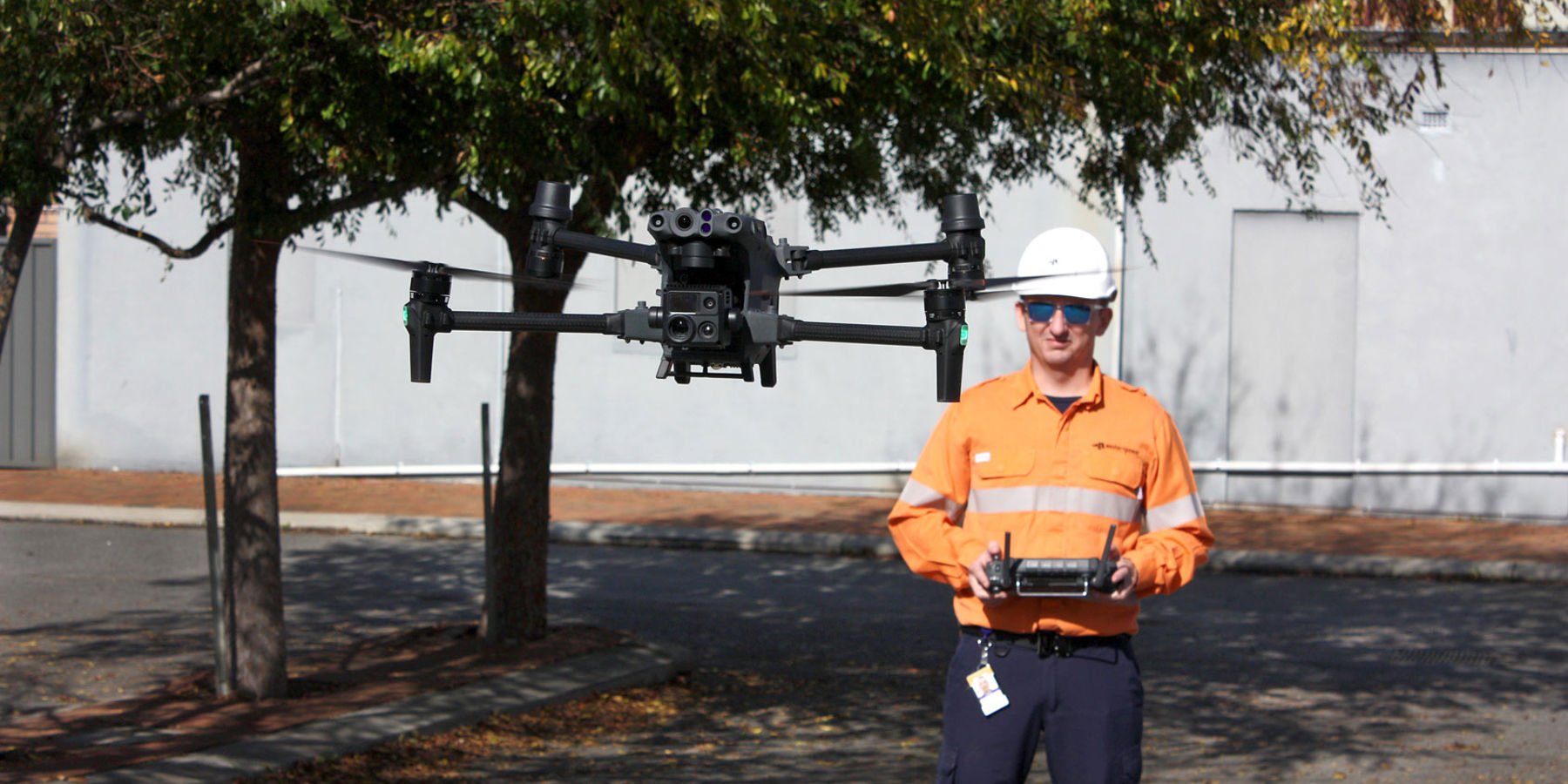Western Power has taken to the skies, adding drones to its daily maintenance fleet to support network reliability and increase operational efficiencies.
Western Power’s squadron of 22 drones has made 488 flight missions including power line inspections, fault finding, operations mapping, line-of-sight testing for communications towers and line stringing since August last year.
Pole inspections to find faults are usually performed by ground teams who are often required to drive or walk to patrol powerlines over long distances, sometimes in land that is environmentally sensitive or hard to access. The use of drones in these inspections significantly reduces the time and resources taken to identify faults, improving response times to outages and mitigating land management risks.

Drone operators use a high-powered zoom lenses and thermal heat sensing to detect potential faults that would not be visible to the naked eye.
In addition, Western Power has been given an exemption from the Department of Fire and Emergency Services to fly drones during total fire and total movement bans, greatly improving our ability to inspect lines and safely re-energise power during bushfire related outages.
Western Power’s drones are located in depots at Geraldton, Northam, Merredin, Kalgoorlie, Katanning, Albany, Bridgetown, Vasse, Picton and Jandakot.
Zane Christmas, Executive Manager Asset Operations, said the drone program not only offered operational and safety benefits, it also upskills Western Power employees in using innovative technology solutions.
“Through embracing drone technology, we’re trialling innovative practices on our network, such as developing a custom drone attachment to string power lines across inaccessible areas such as rivers and valleys, successfully used by pilots in Albany and Bridgetown,” Mr Christmas said.
“We’ve recently successfully conducted thermal drone inspections of insulators on 20 330kV transmission towers covering around 9 kilometres in Kwinana. The operation was undertaken within the Jandakot Pilot Training Area, which required additional planning with local aviation authorities. Through utilising a drone, we were able to complete the inspections in 2 days and eliminate the requirement of an Elevated Work Platform and teams to carry out visual inspections on challenging terrain,” he said.
“Western Power has 67 team members who are active drone pilots, and 30 who are awaiting certification, which requires completing Civil Aviation Safety Authority training, and additional training on inspecting powerlines – bringing additional expertise in-house and supporting jobs.
“The drone program has been hugely successful for our maintenance teams, and we’re excited to see how this technology evolves in the future. It’s another way we’re working to deliver reliable supply and efficient services to the community.”
